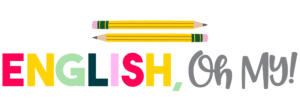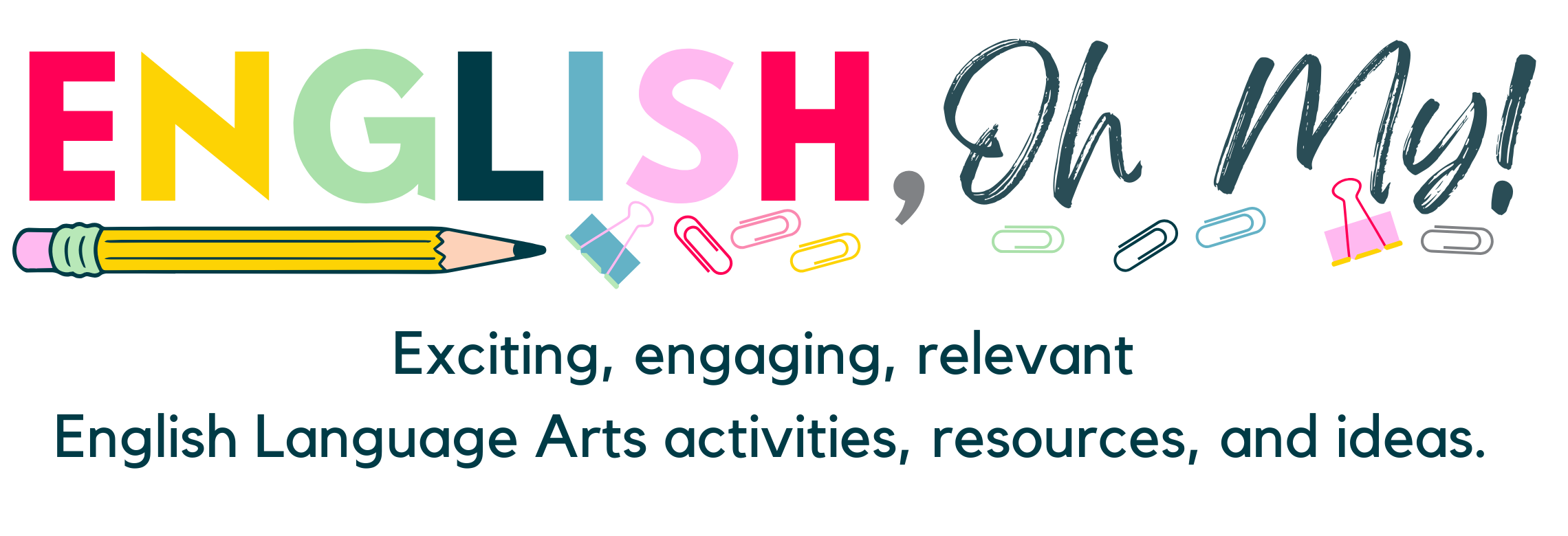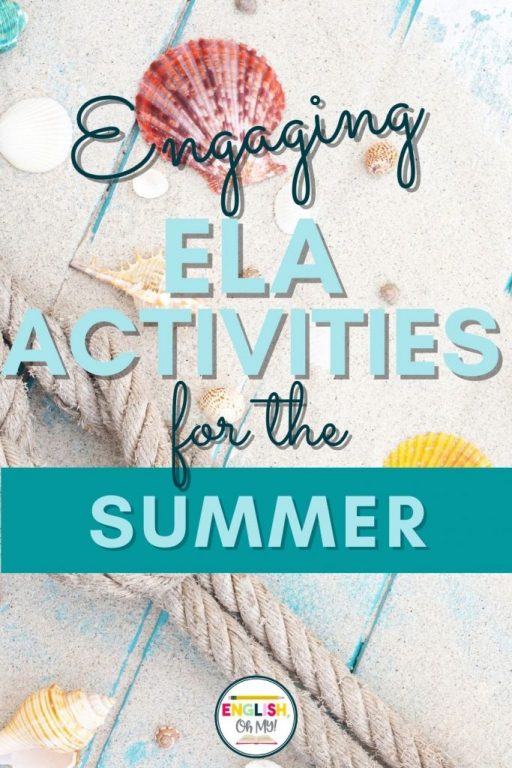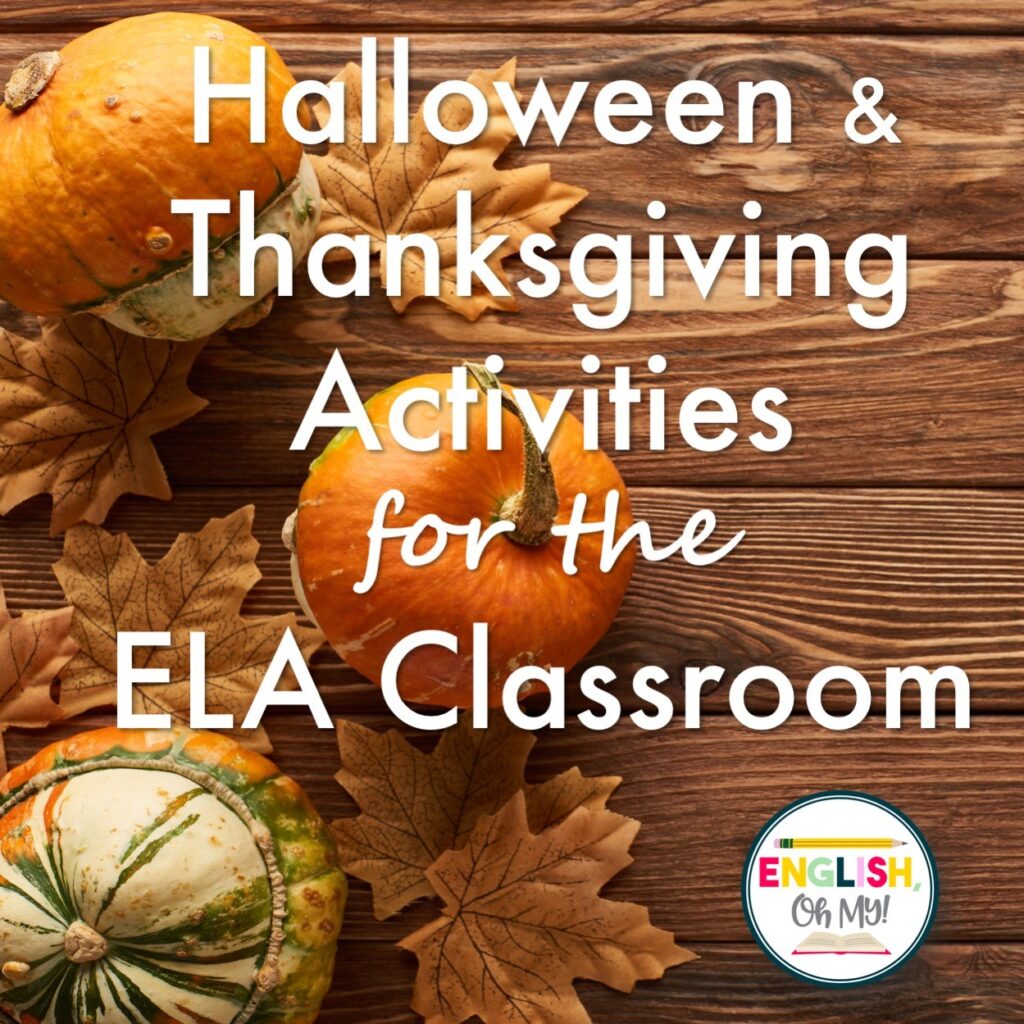
Genius Hour & Learning in Your Classroom
Have you heard of Inquiry-Based Learning or Genius Hour, but you are not really sure what it is or how to implement it in your class? I want to share with you background information about the project, as well as how I implement Genius Hour in my own classroom. My goal is for you to leave this blog post more educated and inspired to try inquiry-based learning in your classroom.
What is Genius Hour?
This assignment, which many know as 20% Time, is a project-based learning project where students work on individual projects focusing on their passion. This project stems from the companies Google and 3M. These companies give their employees 20% of their time to work on a passion-driven or non-work-related project. The inventions of Post-It Notes and Gmail came to fruition while these employees were pursuing their passions. This passion exploration brings this mindset of Google and 3M into the classroom. Your students receive 20% of classroom time or one class period per week at the middle school/high school level. Here, they are able to create, explore, learn, build, invent, modify, write, or follow any passion they have in life.
Why Should I Try This Project in my Classroom?
First, you are going to learn a very valuable lesson as a teacher from this assignment: our students do not have enough time to take control of their learning. Think about our students’ day: our students sit behind a desk for hours, and they complete assignments in their core subjects and other assigned classes. By chance, there may be time during a class to collaborate with their peers or get out of their seats for a few minutes. Overall, our students are confined for most of the day, and 98% of their learning comes from the teacher. They do not get a chance to choose something they want to learn; they are told what to learn. For the most part, they do not get to explore their interests or passions.
What would happen if you could flip this? Did you ever think the endless projects students can create if they take the responsibility for their learning? This inquiry-based project gives our students the ability to do just this-explore their interests, love, and passion while educating themselves inside the classroom.
How Do I Get Started With This Project?
The first step to this project is RESEARCH. You are gong to want to take time to get to know the project, the expectations, the assignments, and the materials WELL. Before I started Operation Genius, I spent hours researching and educating myself on this project. You also do not want to do this research the week before implementing the project. This needs time.
Here are some excellent resources to help you start this assignment:
A.J. Juliani-The 20% Project in my Class
The Day Before Implementing Genius Hour-My Blog Post
Once you research this project and gather all of your information, it is time to start planning. I plan for my students to complete this over 10 weeks; however, you can add or subtract from this time frame. I would definitely give your students at least six or seven weeks. They complete two presentations in this time frame, along with completing their project. In addition, you may want your students to complete a writing component. I have my students write a weekly blog post on Google Sites. Here is a look at my schedule:
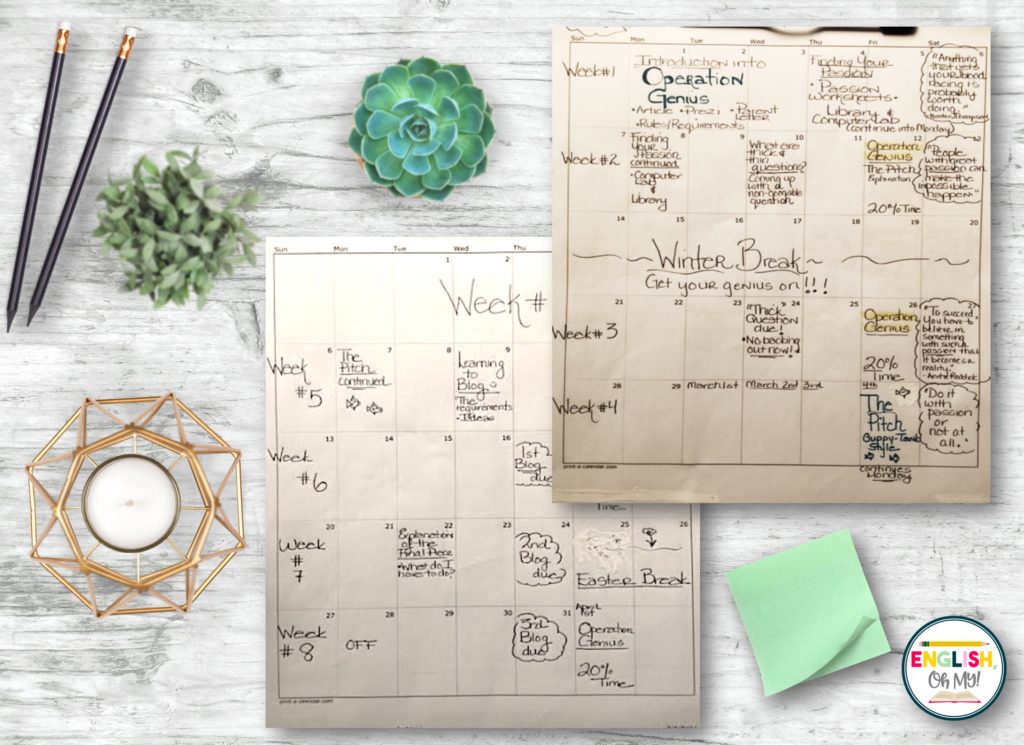
The Teacher Role
This is probably the hardest part of the project because the students drive the project, and their objective is find their passion and ideas on their own. Handing over control to your students is not easy, especially for teachers who are control freaks! This is a challenge; however, one of the most important aspects of Genius Hour is to let your students figure out their questions, their problems, and how to overcome them. With this project, the teacher is NOT supposed to persuade or influence the students in any way but rather guide and question his/her students.
For example, if a student asks, “What am I supposed to do next?”, the teacher answers with a question, “What do you think you have to do next?” This is very difficult because teachers always want to assist their students, and sometimes the teacher answers the question before the student has the opportunity to answer. Our students are used to being told what to do next, and it is demanding for students to figure out the next step on their own. This project challenges your students to answer their own questions, plan their own process, and figure out how they are going to meet their goal/s.
What are my Students Responsible for in this Project?
We know our students are always concerned about their grades, and in this assignment the students are graded mostly on their process and not necessarily on the end product (though it is always exciting for the students to have something to show). Here is the pieces the students where the students will receive a grade:
The “Thick” Question
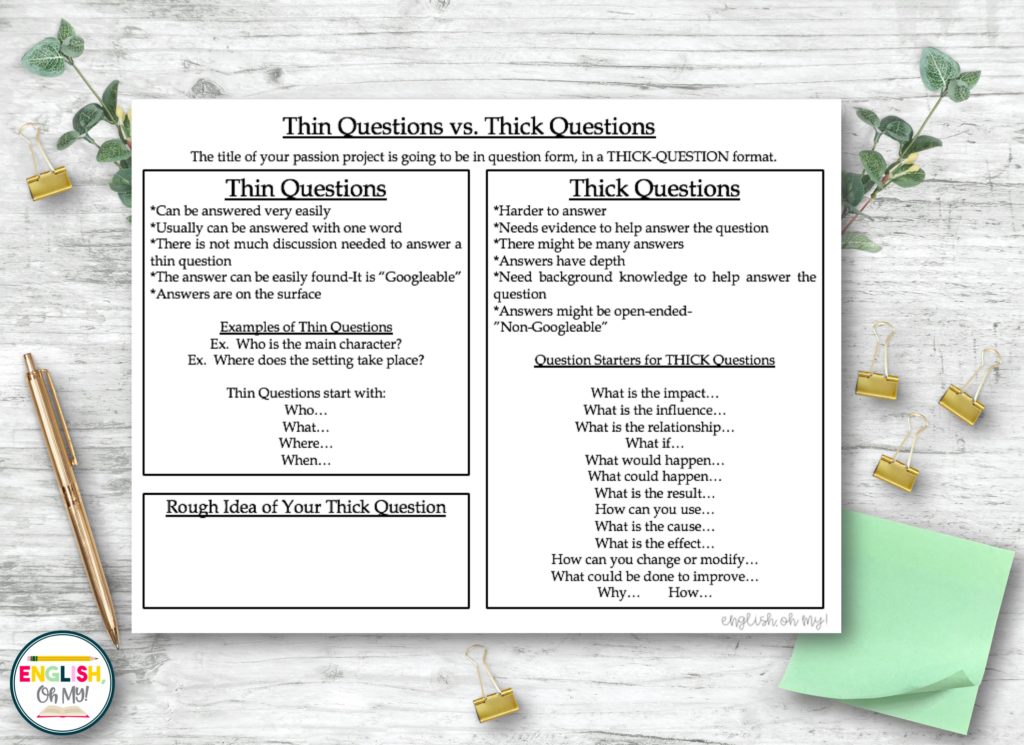
I spend a class period with my students teaching them the difference between “thick” and “thin” questions. I wan my students to create a question that is higher level and does not have one definitive answer; instead, it had multiple answers. I give my students a due date to hand in their “thick” questions, and I grade their “thick” questions on their questioning abilities and if the question is a critical thinking question and requires a deeper thought process. Once the students hand in their “thick” questions, I do not allow them to change their idea for their project. Here is the “Thin vs. Thick” worksheet I give my students. Click HERE.
The Elevator Pitch
The first presentation of the project is the Elevator Pitch. Here, the students “pitch” their idea/creation/invention/passion to their classmates. This is a 60-90 second pitch that includes a short multimedia presentation. In addition, the presenter’s classmates provide constructive criticism to their classmate and decide if s/he should proceed with his/her project.
Blogging Component
One of the major parts of the project is the blogging component, especially in the English Language Arts classroom. The students are expected to write a blog post each week, updating their peers on their progress with their project. I use Google Sites because my school district uses the Google Apps and Google Classroom. Your district may have strict rules about students blogging, and you may have to modify this component (writing packet, notebook, etc.). You definitely want to incorporate a writing component, so students are able to discuss their process and journey.
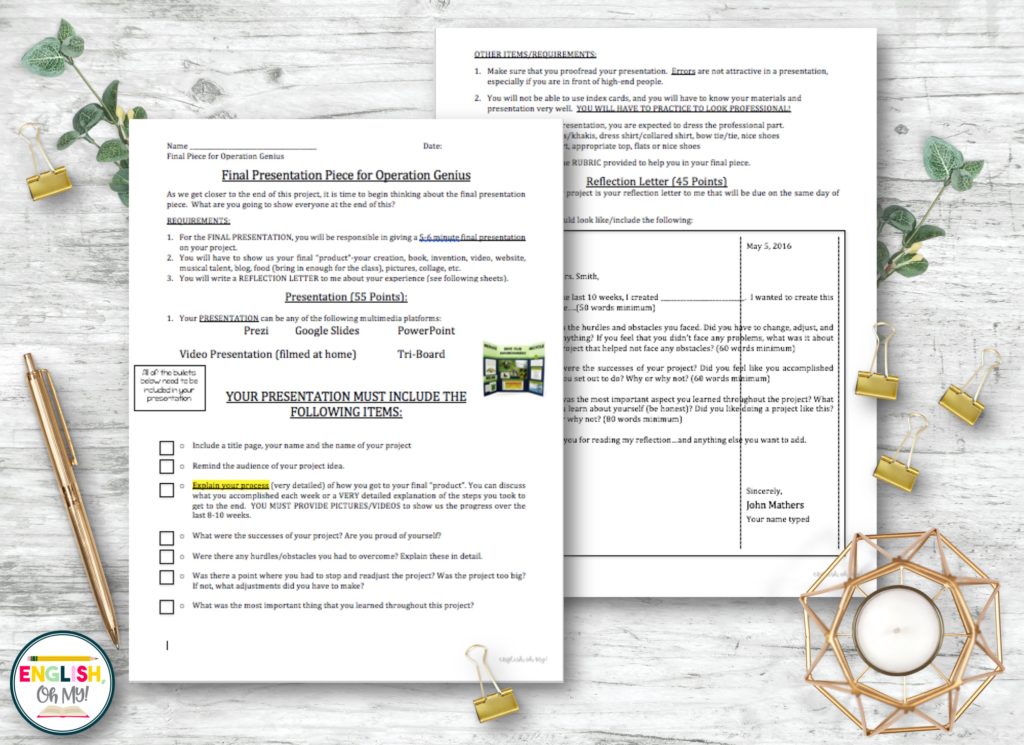
The Final Presentation
At the end the of project, the students present a second time; this time the presentation is 5-7 minutes. The students share their “product”/goal, as well as their process, obstacles, and successes with the class. A multimedia presentation is once again incorporated, but this presentation focuses on the process of the students’ projects and they use pictures/videos showing their progress. In addition, I have my students write a reflection letter, and I count this letter as part of their final grade.
Would You Like to Try Genius Hour in Your Classroom?
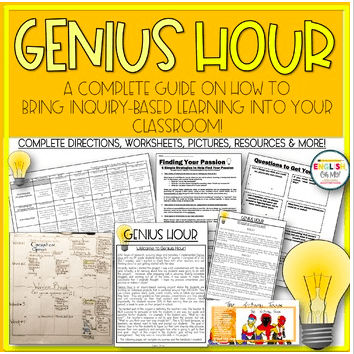
Are you interested in trying this in your classroom? My Genius Hour Product includes a 25+ page manual to help you get you started. It also includes calendars, all of the worksheets needed to implement the project, and Word documents for you to edit. This product is well over 100 pages worth of materials! Check it out HERE.
I hope this blog post inspires you to get started on your own project! If you have any questions, please feel free to e-mail me at englishohmy@gmail.com.
